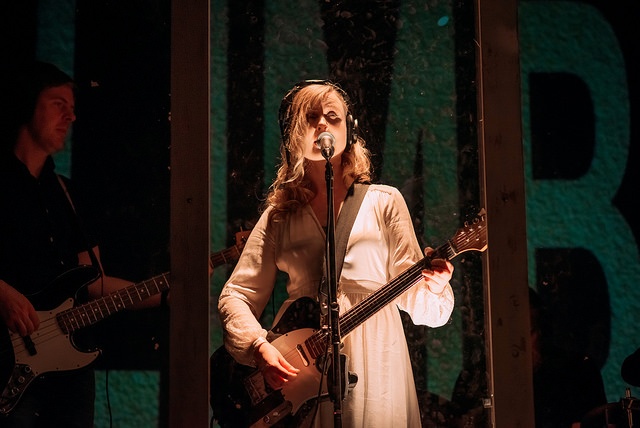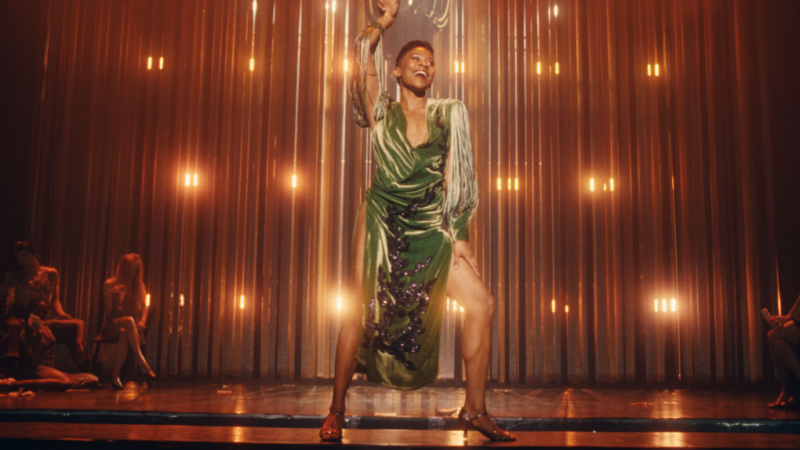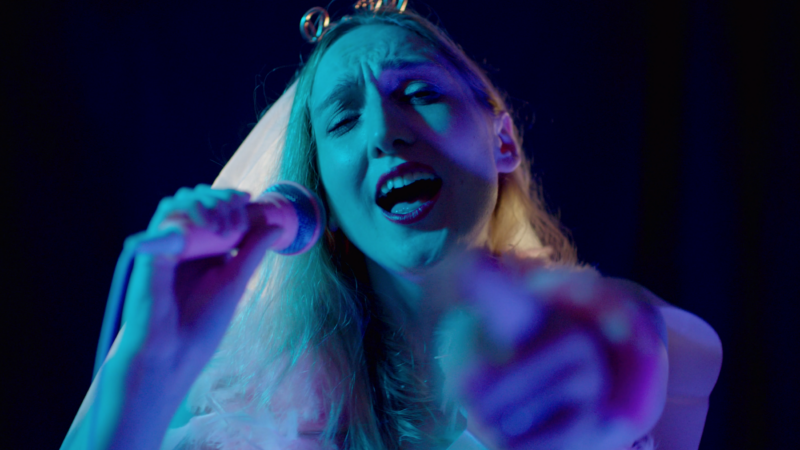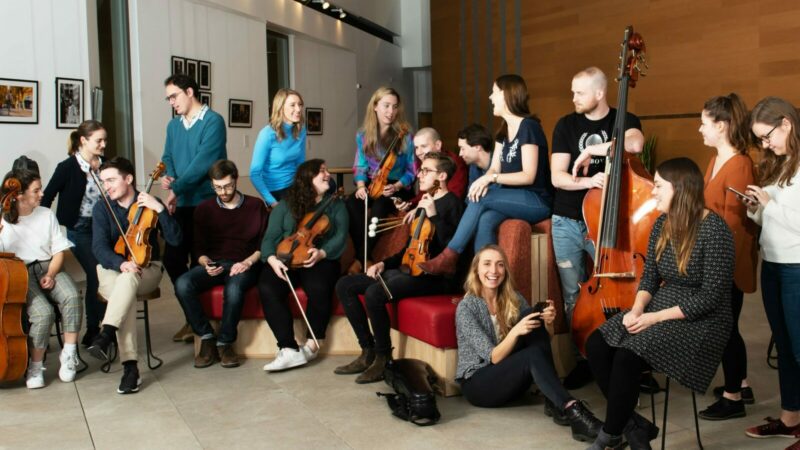Music Is Torture is a piece of ‘gig theatre’ which toured Scotland from 18th May-1st June 2017, supported by Creative Scotland. A dark comedy, inspired by the research of musicologist Dr Morag J Grant, the show was accompanied by a specially-composed soundtrack of songs which also saw release as an album.
The Space supported Tromolo Productions in increasing the audience for this work – with a programme of ‘Lo-Fi Extend’ activity that aimed to grow their audience and embed best practice learnings and processes which will help the company with future activity around their productions.
Working with gig theatre
Tromolo Productions are a Scottish theatre company with a reputation for experimental music-led work. Louise Quinn, an established name in the ‘Artpop’ scene, runs the company single handedly – writing and producing the show and fronting ‘Dawnings’ the band created to perform the accompanying music.
The general approach was focused on several key elements:
- Drafting in specialist radio plugging expertise to get airplay and industry traction for the accompanying music. The soundtrack itself (and credibility of ‘A Band Called Quinn’ on the scene) was a key existing asset tied to the production. In the spirit of using existing material – and reaching music fans – it was therefore felt that specialist resource to promote this element of the production (to increase awareness through coverage and airplay) would give the show a point of difference on social media, but also encourage local fans to buy tickets and attend.
- Prioritising the use and optimization of existing content – The show already had a diverse and well-produced collection of assets. This included posters, high quality photography, the album and a trailer however none had been properly released yet nor tailored for social consumption.
- As an example – the initial trailer contained striking footage but was over a minute long and didn’t feature information about the show or music until over 30 seconds had elapsed. The closing text also looked off-brand – out of step with the quality of the footage and the accompanying poster.
- Working with an editor who specialises in music, a new version of the trailer was created with a focused message aimed at engaging audiences on Facebook. The new version made improvements in several key ways –
- All information was provided in under 30 seconds
- The piece opened with the title so even with Facebook auto play and minimum exposure, users would at least see the title and tag line
- The trailer soundtrack was switched to focus on music – appealing to gig fans and satisfying an ‘ask’ from the venues
- The footage was intercut with clear digestible words that sold what the concept was and meant even without audio, the piece successfully worked as a trailer
- The video was created to work in a square (1:1) format based on past evidence that this gets rewarded by Facebook’s algorithms due to its greater suitability for consumption on mobile phones in portrait mode
Demonstrating low-cost ways of generating extra content
Tromolo were also advised around supplying and using a mobile phone filming kit to make the best of opportunities around the production to generate extra low-cost video. For instance, they knew in advance that the academic who inspired the research would be visiting the company just ahead of the tour, so that presented an opportunity for interesting new content that Tromolo could gather and turn-around on their own.
An effective publishing and distribution plan
Louise from Tromolo was maintaining the social feeds alongside all the other work involved in the production. The organisation produced a publishing plan which outlined the ‘arc’ of the campaign and provided timing, messaging and optimisation thoughts around all key pieces of content. They also researched and provided an extensive seeding list – with potential partners and their contact details who could be approached ahead of time for re-sharing and support. This went beyond just the ‘listings’ and arts scene – and looked to include a wide range of groups to which this could appeal including Scottish music supporters, performance groups and human rights organisations.
Experimentation
The team tried to match the ambition for the production by showing, again within the confines of simple content formats, the ability social gives you to experiment. Using Facebook metadata injection information, for example, they re-tooled some of the existing graphical elements into a 360 poster for Facebook
Top tips for reaching audiences online
Be clear on the audience. Work out the USP of your production and what that means for your content creation. Once we had audience profiling insight from venues that music audiences were the opportunity, lined up radio support for the music assets, and came up with the phrase ‘gig theatre’ to explain the offer – it gave everything a focus in terms of editorial and content distribution.
Think holistically. The album and Louise’s connections to the music industry were a real asset. The work done by the radio plugger to create buzz and get airplay obviously had no direct digital results, but gave credibility with exactly the audience we were targeting and something tangible to ‘sell’ to those we were encouraging to lend their support with digital assets.
Use what you have. It’s cheaper to create ‘new’ quality content out of existing material than something from scratch. The majority of this campaign was done through re-purposing and re-tooling existing content which had been produced anyway (production photography, poster designs, soundtracks etc.).
Optimise! This was a heavily Facebook-focused campaign with content therefore tailored to suit the demands of that platform e.g. video/images matching the platform’s preferred specs, consideration of user experience without audio etc.
Partner-up. For small organisations, distribution partners are key. Step back and think about all the connections your work might lead to. It’s not just about the arts sector but anyone related – in this case everyone connected to the cast, Scottish music fans, human rights organisations, venues etc.
Boost. Targeted paid spend to boost posts that are doing well can be an incredibly useful tool.
The project was a real success – achieving all ‘soft’ ambitions as well as all ‘hard’ KPIs
- 611 attendees – 540 of whom bought tickets
- Social activity on primary platform alone (Facebook page) delivered a combined total reach of 266,944 between the start of the campaign and the day of the final show. In terms of digital engagement the campaign saw 4,176 unique user engagements on the Tromolo Productions Page and 2,787 unique user engagements across Tromolo Productions Posts. Of particular note was the success with video material – whereas before engagement had been minimal, this project saw 52,974 video views (an 882800% increase!)
- Added 81 fans on Facebook, 387 followers on Twitter
The key drivers of engagement were primarily visual – particularly the teaser trailer which enjoyed significant success.
Particular success came with the initial release of the trailer – used as a social advert for the run. Optimised for Facebook and accompanied by a general call to action (“Love music? Check out the exclusive trailer for unique gig-theatre show Music Is Torture.”) publication was followed by encouraging partners to re-share and, with some paid boosting, reached 40k people and attained 45,892 video views (12k of which were 10 second views).

Less successful were the Q&A videos generated from the low-cost mobile toolkit. Originally intended to give Tromolo the opportunity to create ancillary content at minimal cost, and to have some new material that would give the show more topical currency and potential of tapping into current affairs/news in the immediate run up to the show, the end results were disappointing. Limitations of time and lack of experience with that mobile tool-kit meant despite being short and punchy, the quality wasn’t as strong or media-friendly as originally hoped. They were also a clear divergence from the overall approach of focusing on the ‘music fan’ audience though this still did better than the majority of Tromolo’s pre-Music Is Torture video output.
Future development
The project has had a valuable impact on Tromolo Productions. As a result of the radio play and success of the digital content, there have been offers to play the music live at festivals and also discussions about putting the show on at the Edinburgh Fringe next year. The music video is now being submitted to film festivals and the soundtrack and content continues to attract radio play and audiences – months after the live shows have concluded. There have also been approaches by a Film Producer who attended a production at the Tron.
Another benefit has been in Bal Cooke (who is involved with Tromolo) being able to take many of the learnings around social best practice and apply it to the ‘Sensatronic Lab’ project around accessible instruments he is currently working on for Sense Scotland. Similarly, Dr Morag Grant was offered a job within the music faculty at Edinburgh University during the run of the show which she said was the result of the profile of her show and raised awareness of her research.
Tromolo feel it has changed how they would approach campaigns in the future – as they now have a better grasp on maximizing content opportunity but also how to use partners, specialists and creative use of editorial to target and appeal to an audience.
More information:
Show Trailer
360 Poster
Music video
The Stage Review
Edinburgh Guide Review
The Scotsman Review
Herald Scotland Review
Guardian Review
More case studies, articles and resources from The Space.
How useful was this resource?




